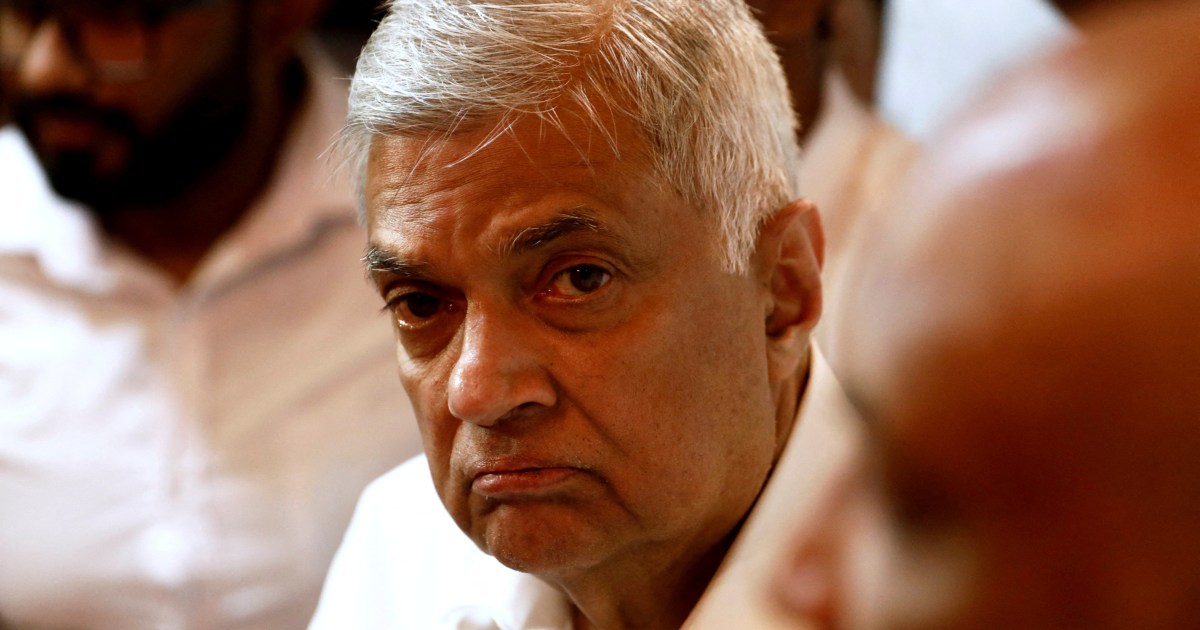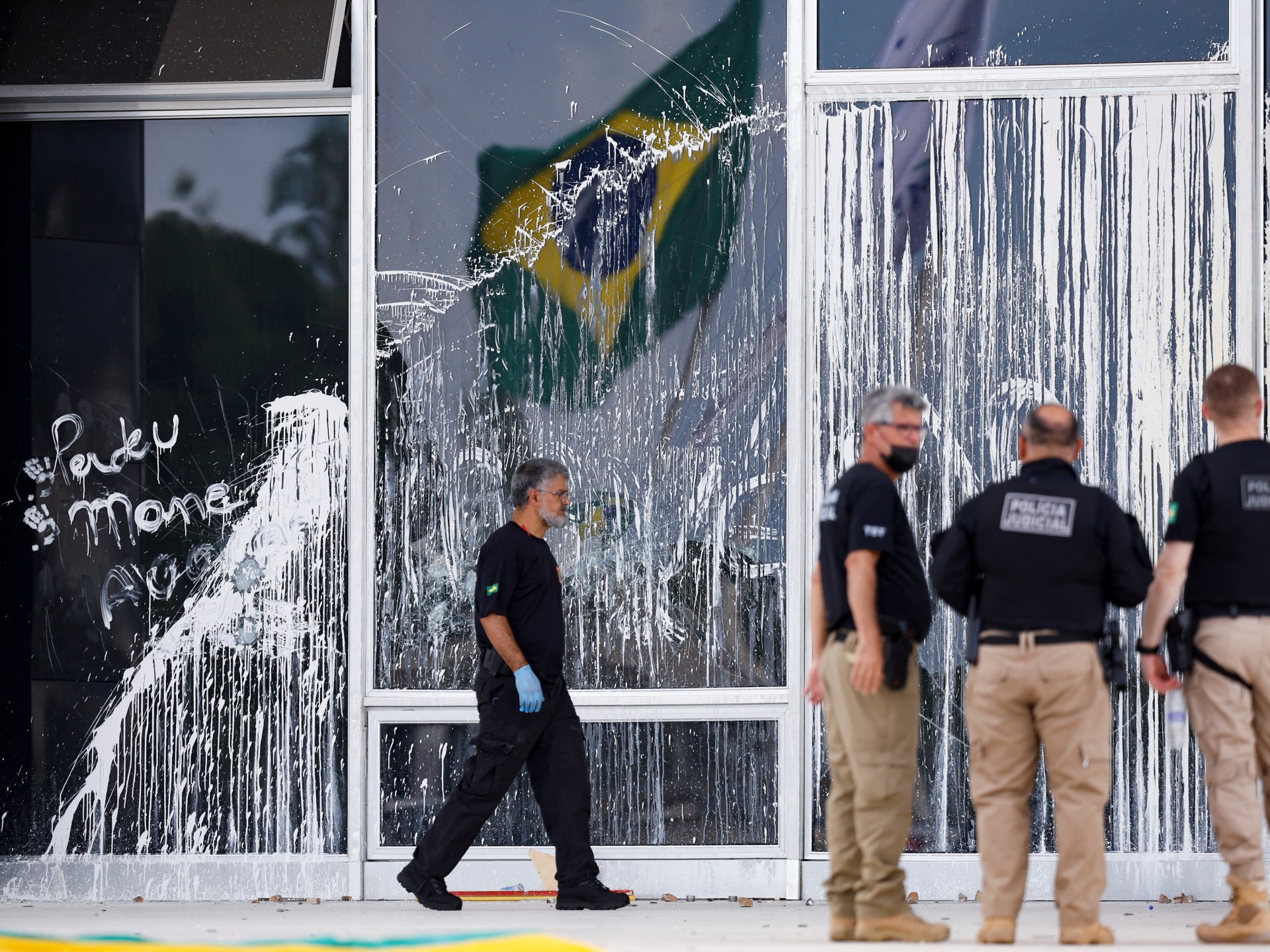The ‘new’ PM will not be a panacea to Sri Lanka’s problems
This week saw the most serious unrest in Sri Lanka since the aftermath of the Easter Bombing in 2019. A month-long protest in Colombo, calling on President Gotabaya Rajapaksa to resign, was attacked by pro-government mobs.
Protesters retaliated swiftly, chasing down those who took part in the attacks, with videos and photos of stripped and beaten Rajapaksa supporters circulating on social media. Eight people died in the ensuing violence across the Sinhala-majority south of the island, with more than 100 properties torched, mostly those linked to the president’s party.
The president’s brother, Prime Minister Mahinda Rajapaksa, resigned in the aftermath, fleeing to a navy camp, a notorious torture site, in the Tamil-majority northeast.
He has now been replaced by another old face – the United National Party’s (UNP) Ranil Wickremesinghe, who has occupied the premiership on no fewer than five previous occasions but has never seen out a full term. Wickremesinghe himself has been accused of turning a blind eye to corruption and scuttling opportunities for addressing the decades-old ethnic conflict during his prior stints.
The Rajapaksas’s stunning fall from grace was precipitated by an economic crisis, caused by decades of fiscal mismanagement and exacerbated by their populist policies.
Not even two years ago, Sri Lanka’s most prominent family swept parliamentary elections in a landslide victory, winning a two-thirds majority. The Rajapaksas ruled the roost. President Gotabaya, who also won with a significant majority in 2019, strengthened his powers and consolidated the family’s position in state structures and the economy of the country, amid celebrations by the Sinhala population. His brother, and former president, Mahinda won the premiership, and several other members of the family took control of key ministries. The UNP was reduced to one seat. The Rajapaksa victory was almost absolute, with the vast majority of the Sinhala vote going to their party, the Sri Lanka Podujana Peramuna, which ran on a populist and racist platform, promising prosperity, splendour and the preservation of Sinhala-Buddhist supremacy on the island.
After their election victories in 2019 and 2020, the Rajapaksas wasted no time in strengthening their grip on the state and imposing measures that disadvantaged Tamils and Muslims. From increasing militarisation of Tamil areas, harassment of Tamil journalists and NGOs, to issues such as the forcible cremation of Muslim COVID victims, the Rajapaksa government seemed to be intent on showing non-Sinhala communities that they were second-class citizens.
The protests in the Sinhala-majority South, however, did not erupt because of the longstanding human rights concerns and accountability demands, but the economic hardships that the government’s economic policies brought upon them.
The Rajapaksas promised “vistas of splendour” and instead brought poverty and destitution. This resulted in an unprecedented backlash against the government. The continuing protection and promotion of the Sinhala-Buddhist hegemony that has underpinned Sri Lanka’s economic policies since independence, means that successive governments have made fiscal policy decisions that are motivated by the desire to maintain the Sinhala-Buddhist ethnocracy, rather than what is in the best interest of the country’s economy and prosperity of all its citizens.
After the assault on protesters and the ensuing backlash, the state deployed tactics that are tried and tested among the Tamil population in the northeast, including emergency regulations granting the military and police extraordinary powers. Military vehicles can be seen patrolling Colombo, amid empty streets due to an on-and-off island-wide curfew, with soldiers at checkpoints stopping vehicles.
Tensions remain, with the military and police warning they will shoot violent protesters on sight. Criticism of the government’s response came swiftly – the US State Department expressed concern about the deployment of the military and condemned the violence against protesters.
Amnesty International demanded the immediate rescinding of emergency regulations. Protesters dug in, defying the curfew and rebuilding the encampments that were destroyed by the pro-government goons. Sinhala civil society and opposition parties condemned the government’s actions and reaffirmed their solidarity with the protesters.
The Rajapaksas managed to push even those on the fence to the side of the protesters. They hold the unique record of being the most universally despised government in Sri Lanka’s history: despised by Tamils because of the genocidal attacks during the war and continuing oppression; despised by Muslims for enacting discriminatory policies and engineering ethnic riots against them; and now, despised by the Sinhalese for bringing economic disaster upon them.
The appointment of Wickremesinghe as prime minister is widely seen as a move to allow President Gotabaya to continue in his position in the hope that the protests will eventually dissolve. But this is unlikely to appease the activists, who are standing firm on their demand for the president’s resignation.
For Tamils, Wickremesinghe is a familiar foe, and indeed the main Tamil nationalist parties have slammed his return. The former current prime minister has rejected accountability for war crimes and even claimed that he “saved Mahinda Rajapaksa from the electric chair” and protected state officials from being dragged in front of the International Criminal Court.
He supports the foremost place that Buddhism occupies in the Sri Lankan constitution and is on the record rejecting federalism as a solution to the ethnic conflict – all key grievances of the Tamil people. When it comes to addressing the root causes of the ethnic conflict and the ongoing demands of Tamils for a political settlement, Wickremesinghe and the Rajapaksas are not that different.
The limited inclusion of Tamil political rights, demilitarisation of the Tamil-majority northeast and accountability for war crimes in the protest demands has played a part in the relatively lukewarm participation of Tamils.
As the population in the south of the country sees a new face of the Sri Lankan state, many Tamils are somewhat bemused by the Sinhalese community’s shock that the all-Sinhala military is pointing its guns at its own. Tamil member of Parliament Gajen Ponnambalam, in a prescient speech in Sri Lanka’s parliament in 2020, predicted that the state would turn on the Sinhala population, too. However, the state’s use of force against these largely Sinhala protesters is restrained compared to what Tamils have faced in the northeast. The military is ubiquitous in the northeast, enmeshed in the day-to-day life of the Tamil people. The troops, more than 300,000 of them, are spread across seven regional commands, of which five have bases in the Tamil-majority northeast – less than a third of the island. Loathed by Tamils due to decades of violence meted out against them, the military has become a permanent and sinister presence in the northeast since the end of the war.
On May 18, Tamils will observe Tamil Genocide Remembrance Day. Traditionally this day is marked with gatherings across the northeast. Last year, ten Tamils were arrested under the draconian Prevention of Terrorism Act for holding remembrance events, with many more reporting intimidation and harassment by security forces. A memorial to the Tamils who had died was destroyed. This year, police are already exploiting the emergency regulations passed to respond to the anti-Gota protests, to intimidate Tamils in Mullaithivu, which has not seen any unrest related to the anti-Gota protests. The police threaten Tamil civilians saying they have orders to shoot those gathered illegally. As preparations for commemorations of the Tamil war dead are underway across the northeast, stakes are high and it will be an early test of Wickremesinghe’s premiership.
The reaction to the anti-Gota protests on May 18, usually marked by “victory” celebrations in the Sinhala south, will also be a crucial indicator of how receptive the protesters are to the concerns raised by Tamils, particularly if as expected the military continues to harass and intimidate those commemorating the day. With an old prime minister occupying the post for the sixth time, what was obvious to Tamils should be obvious to the rest of the population – without a fundamental restructuring of the state that addresses the root causes of the ethnic conflict, and justice and accountability for the mass atrocities that occurred during the war, Sri Lanka is doomed to repeat its past, and stability and prosperity for all its citizens will remain elusive.
The views expressed in this article are the author’s own and do not necessarily reflect Al Jazeera’s editorial stance.




